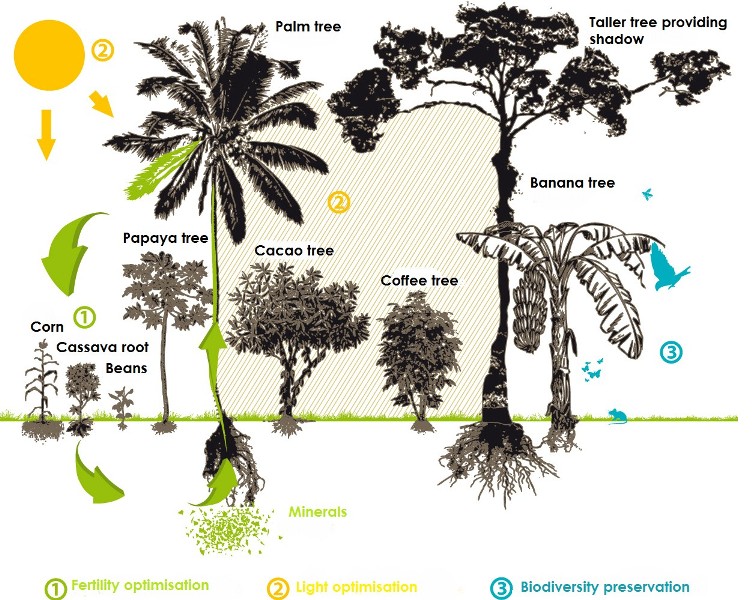Agroforestry: Difference between revisions
Siterunner (talk | contribs) No edit summary |
Siterunner (talk | contribs) No edit summary |
||
| Line 23: | Line 23: | ||
''We examine the role of perennial species, especially trees, in the attainment of improved staple crop yields; provision of nutritious traditional food; the reduction of poverty, hunger, malnutrition and environmental degradation; the improvement of rural livelihoods; | ''We examine the role of perennial species, especially trees, in the attainment of improved staple crop yields; provision of nutritious traditional food; the reduction of poverty, hunger, malnutrition and environmental degradation; the improvement of rural livelihoods; and mitigation of climate change with a programme of Integrated Rural Development, a policy roadmap.'' | ||
Revision as of 02:49, 28 July 2017
● http://www.discoveryorganics.ca/agroforestry-for-resilient-communities/
○
● http://www.greenpeace.org/international/Global/international/code/2015/cocoa/konye-EN.html
● https://youtu.be/tm_LjHV47C8 (Video presentation)
○
● http://agroforestry.org/projects/food-producing-landscapes
● http://agroforestry.org/the-overstory
We examine the role of perennial species, especially trees, in the attainment of improved staple crop yields; provision of nutritious traditional food; the reduction of poverty, hunger, malnutrition and environmental degradation; the improvement of rural livelihoods; and mitigation of climate change with a programme of Integrated Rural Development, a policy roadmap.
○
Agroforestry Educational Videos
Neil Logan -- https://permacultureglobal.org/users/3556-neil-logan
○
● http://www.farmcenter.org/who-we-are.html
By Craig Elevitch
The term agroforestry is a relatively new word in the English language that describes agricultural practices, such as many of those employed by Pacific Islanders for millennia. The word refers to the practice of growing trees combined with crops and/or animals in ways that create benefits from their interactions. The term agroforestry applies to food forests, shade-grown cropping, windbreaks, timber trees with livestock, trees for coastal protection, and many other practices. All of these agricultural systems can increase productivity compared with conventional agriculture. Agroforestry systems tend to have less pest and disease problems, provide natural weed control, and require less fertilizer and other outside inputs compared with conventional agriculture. They also provide long-term benefits for the soil and watershed.
Food forests are an enduring example of agroforestry.
● http://www.hawaiihomegrown.net/about/project-team
○
Agroecology -- https://en.wikipedia.org/wiki/Agroecology
Agroforestry -- https://en.wikipedia.org/wiki/Agroforestry
-- #Agroecology; #Agroforestry
○
